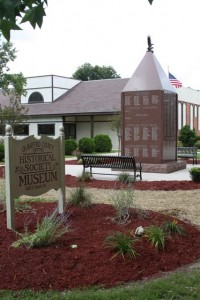
Raising over $100,000 in 2 years, Phil and WD Mullen made the Veterans Memorial a reality. Recklein Auditorium sits in the background.
Recklein Commons, so named by History Museum director Betty DeLeo, is an area of public buildings, green space, and community spirit. The north end of Smith Street is the location of Recklein Auditorium, Holy Cross Church & grounds, the Cuba Recklein Memorial Library, the Crawford County History Museum, and the Veterans Memorial. It’s a busy area just a couple blocks off W. Washington (Route 66).
All of the above buildings have significant green space with plantings and landscaping that create an attractive setting for public use.
At one time the stone building housing the museum and the adjacent auditorium were the site of the Cuba Schools. Another school building stood where the green space is today. There was no library across the street. When the new school was built, the old school was empty of the students who had given it life. Then a man named William Recklein changed the face of Smith Street with a generous gift to the city that is still paying benefits today.
It started with a love story…
In 1902, William Recklein married Ida Rau. Recklein was a successful banker and investor and a veteran of the Spanish-American War. In 1906, the Reckleins moved from South St. Louis to a farm 1 1/2 miles South of Cuba to what is now 241 Highway O. They built a beautiful home framed with native rock and planted trees to enhance the landscape.
An aside about the Recklein Home on Hwy O…
In 1969, Fred Evens brought 57 acres from the Recklein estate and an additional 80 acres across Hwy O from Ruth Johnson, Mr. Recklein’s nurse for several years, and developed the two-lake golf course, which opened in 1973. Today, it is the Cuba Lakes Golf Club.
But back to the love story…
After Ida’s death, Recklein built the Cuba Memorial Library. He told Mayor Cecil Markley that he wanted to build a library for the town in memory of his wife Ida. The library was dedicated in 1962 four months after Mr. Recklein’s death. Before his death, he also purchased the old school buildings and grounds across from the library on North Smith Street in Cuba for $10,000 at a public auction. He then donated the buildings and grounds to the city of Cuba to be used for education, culture, and recreation. The building in front was torn down for green space, and the remaining buildings benefit the citizens of Cuba. Today, Recklein Commons is the site of the Crawford County History Musuem and Recklein Auditorium.

The Cuba Library is a busy location in the Commons area. Artist Julie Nixon Krovicka painted the sign.
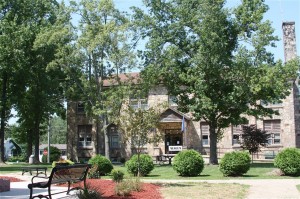
The grounds of the History Museum offer benches, tables, and shade trees to create an inviting place to enjoy the green space or reflect at the Veterans Memorial.
The Catholic Church grounds with its Ozark Stone church, wall, rectory, and school buildings are a real treasure to the community. During its early history, strawberry fields surrounded the church, and townspeople could pick berries. Its religious painting on the outside of the church hall, is a fitting addition to the mural city.

After the Memorial’s dedication in 2008, a concrete surround, plantings, and lights were added to the site. It’s a striking scene at night.
With many donations from Cuba and all over the US, the Veterans Memorial was built and dedicated on Veterans Day 2008. This monument is the latest addition to the Recklein Commons and is a great gift to the town in honor of its veterans who have served their country.
The third weekend of October, this area comes alive on Saturday and Sunday as the setting of Cuba Fest, a family-friendly weekend of special events. But the area is one of serenity and civic events throughout the year. You can also find the City Hall and the Senior Center on North Smith Street.
See more information on Viva Cuba at cubamomurals.com.
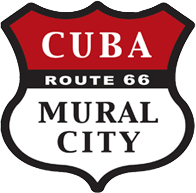



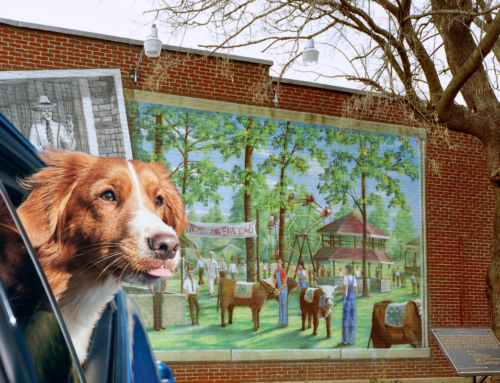

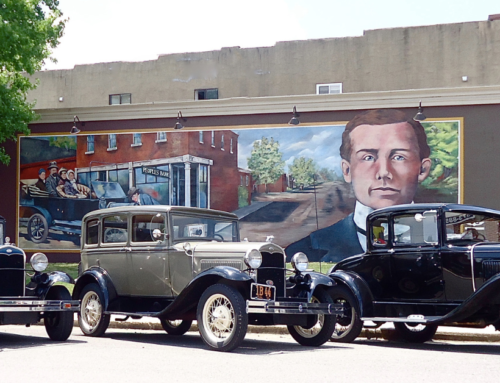
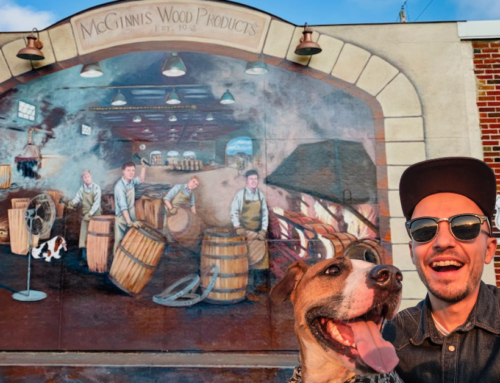
I’ve been there to the museum. I didn’t realize this was the site of the schools. My mother would have gone to school in Cuba from about 1915 to about 1923. It is so cool to know where she went to school!
If those walls could talk….
It would be nice if physical addresses were posted on this website so a GPS could be used to find the locations of all Cuba has to offer to visitors.
Gwen, that’s a good idea. Even though we use the locational features ourselves, we have been remiss on that aspect of the site and blog. We will make some positive changes in that direction in the future. Thanks for reading the website/blog and thanks for your good suggestion.
You can walk the concrete foundtion footing of the 1906 school. The school housed elementary on first floor. In 1938,No kindergarten. Two grade levels per room. High school on the second floor. In 1950, sixteen credits were required to graduate from high school. The curriculum at Cuba had twenty classes. Do you have a picture of that school? The auditorium was not there when the school opened.
Marilyn, thanks so much for the info. That enriches a post so much. I am thinking that I have a photo of the school building that was torn down, but I will have to look. Feel free to send me one if you have one that want to share.